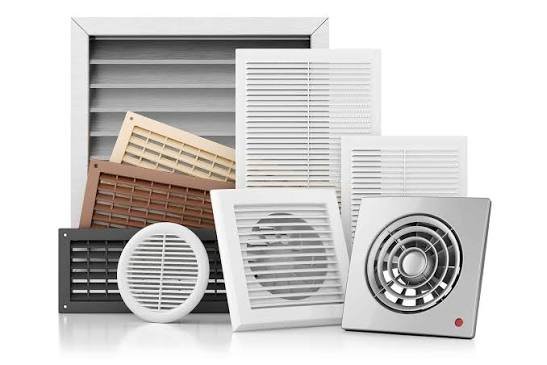Air quality is a critical factor in both comfort and safety, whether at home, in a commercial space, or within an industrial facility. Poor ventilation can lead to heat build-up, excess moisture, or the accumulation of dust and fumes, all of which create unhealthy and inefficient environments. An extraction fan provides a practical solution by removing unwanted air and helping maintain cleaner, fresher conditions.
What is an Extraction Fan?
An extraction fan is a mechanical ventilation system designed to pull stale, humid, or contaminated air out of a space and discharge it outside. Unlike fans that simply circulate air within a room, extraction fans actively remove pollutants and replace them with fresher airflow.
They are often confused with exhaust fans, but the terms are commonly interchangeable. Extraction fans can be found in a variety of designs, including wall-mounted, roof-mounted, and inline duct systems, each suited to different applications.
How Does an Extraction Fan Work?
An extraction fan works by drawing in air from an enclosed environment, passing it through a rotating blade system powered by a motor, and expelling it outdoors via vents or ducting. This process helps maintain steady airflow, reduces humidity, and removes odours or harmful particles.
Key components include:
- Motor – powers the blades to generate airflow.
- Fan blades – pull air in and direct it outward.
- Housing – contains and protects the fan mechanism.
- Ducting or vents – provide a pathway for expelled air.
Choosing the right extraction fan depends on the size of the area, the type of contaminants present, and the intended level of ventilation.
Where Are Extraction Fans Commonly Used?
Extraction fans are versatile and can be applied across a wide range of environments:
- Residential – bathrooms, kitchens, and laundries to manage steam, odours, and moisture.
- Commercial – restaurants, offices, and retail outlets to maintain fresh and comfortable spaces.
- Industrial – warehouses, factories, and processing plants where dust, fumes, or heat need to be controlled.
- Agriculture – barns, poultry sheds, and grain storage facilities for temperature and humidity regulation.
Benefits of Using Extraction Fans
Installing an extraction fan provides clear advantages:
- Improved air quality – reduces harmful pollutants and odours.
- Moisture control – prevents condensation and mold.
- Safer environments – extracts hazardous fumes, dust, or chemicals.
- Energy efficiency – supports HVAC systems and reduces energy consumption.
- Compliance – helps meet workplace health and safety requirements.
Choosing the Right Extraction Fan
When selecting an extraction fan, consider:
- The size of the space and required airflow capacity.
- Type of contaminants (dust, fumes, humidity).
- Noise levels, particularly in offices or residential areas.
- Durability and safety certifications for industrial use.
- Whether a wall-mounted, roof-mounted, or inline design is best suited.
Maintenance & Lifespan
To maintain efficiency, extraction fans require regular servicing. This may include:
- Cleaning blades, grills, and ducts.
- Checking motors and bearings for wear.
- Replacing parts showing reduced performance.
With proper care, a well-built extraction fan can last many years, even in demanding environments.
Next Steps
Extraction fans play a vital role in ensuring safe, clean, and efficient environments. By actively removing stale or contaminated air, they improve comfort, protect health, and support compliance across homes, businesses, and industries. Selecting the right system ensures long-term benefits for air quality and energy use.
